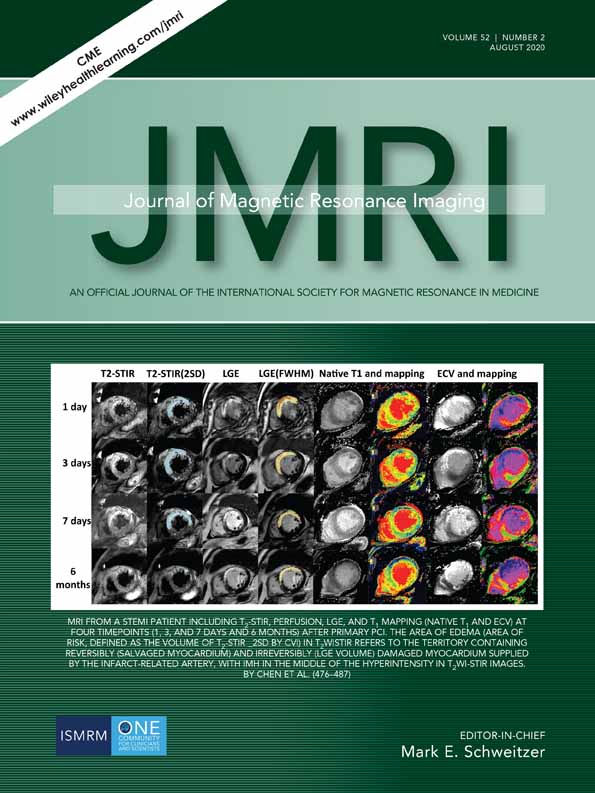Diagnosis and Grading of Prostate Cancer by Relaxation Maps From Synthetic MRI
Abstract
Background
The interpretation system for prostate MRI is largely based on qualitative image contrast of different tissue types. Therefore, a fast, standardized, and robust quantitative technique is necessary. Synthetic MRI is capable of quantifying multiple relaxation parameters, which might have potential applications in prostate cancer (PCa).
Purpose
To investigate the use of quantitative relaxation maps derived from synthetic MRI for the diagnosis and grading of PCa.
Study Type
Prospective.
Subjects
In all, 94 men with pathologically confirmed PCa or benign pathological changes.
Field Strength/Sequence
T1-weighted imaging, T2-weighted imaging, diffusion-weighted imaging, and synthetic MRI at 3.0T.
Assessment
Four kinds of tissue types were identified on pathology, including PCa, stromal hyperplasia (SH), glandular hyperplasia (GH), and noncancerous peripheral zone (PZ). PCa foci were grouped as low-grade (LG, Gleason score ≤6) and intermediate/high-grade (HG, Gleason score ≥7). Regions of interest were manually drawn by two radiologists in consensus on parametric maps according to the pathological results.
Statistical Tests
Independent sample t-test, Mann–Whitney U-test, and receiver operating characteristic curve analysis.
Results
T1 and T2 values of PCa were significantly lower than SH (P = 0.015 and 0.002). The differences of T1 and T2 values between PCa and noncancerous PZ were also significant (P ≤ 0.006). The area under the curve (AUC) of the apparent diffusion coefficient (ADC) value was significantly higher than T1, T2, and proton density (PD) values in discriminating PCa from SH and noncancerous PZ (P ≤ 0.025). T2, PD, and ADC values demonstrated similar diagnostic performance in discriminating LG from HG PCa (AUC = 0.806 [0.640–0.918], 0.717 [0.542–0.854], and 0.817 [0.652–0.925], respectively; P ≥ 0.535).
Data Conclusion
Relaxation maps derived from synthetic MRI were helpful for discriminating PCa from other benign pathologies. But the overall diagnostic performance was inferior to the ADC values. T2, PD, and ADC values performed similarly in discriminating LG from HG PCa lesions.
Level of Evidence: 2
Technical Efficacy Stage: 2 J. Magn. Reson. Imaging 2020;52:552–564.




